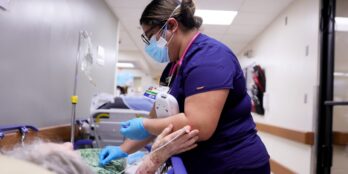
Interoperability: The Key to Optimal Care
 3 min
3 min
Interoperability, as it was envisioned, should be built on transparency and connectivity, allowing a patient’s critical health information to be easily accessible, regardless of where treatment is being administered. While more than 95 percent of hospitals and 90 percent of office-based physicians are now utilizing electronic health record (EHR) platforms, many struggle with — or have reservations around — sharing information outside of their facility using the latest innovations. As such, silos are a great barrier to realizing a fully implemented state of interoperability.
The current gap of information exchange is impeding the kind of care skilled nursing and long-term, post-acute care (LTPAC) facilities can offer. For example, a patient experiences a serious medical incident — such as a fall or stroke — and arrives at the hospital where staff may not have access to the patient’s existing data, which could inform the best delivery of care. Or perhaps they’re able to access that data, but not right away. The patient’s care is now delayed, which can be additionally concerning depending on the time-sensitivity of the patient’s condition.
Taking this example a step further, let’s explore what happens after care at the hospital has concluded. The patient requires rehabilitation and a continuation of care document (CCD) is issued to a post-acute care facility. From there, the patient’s information is transferred by less-than-foolproof methods such as fax, for example. A glitch as simple as a jammed paper feed could prevent critical information from reaching the appropriate caregiver.
As value-based care and payment-care models are moving toward the forefront, blind handoffs of patient information are no longer viable, as they drastically increase the financial risks hospitals and payer groups now have — not to mention the clear detriment the system has on delivery of care.
Closing the Gap
The larger question is how does the industry get from Point A to Point B? The easy answer is to liberate the data through a cloud-based infrastructure that supports an efficient, easy-to-access data exchange between all caregivers. An integrated solution would connect stakeholders across the care continuum providing accurate insights when needed, eliminating data silos between care partners, and enabling more confident decision-making.
These systems would promote:
- Optimized transitions: Data needs to travel with the patient — or before movement — discretely across all systems.
- Patient visibility: Data should reflect the most current ADT information, identifying and sharing where a patient is and from where they’ve been discharged.
- Central view of LTPAC patients: This facility-agnostic feature should offer automated updates of a patient’s functional progress.
- Ongoing status and monitoring: Maintaining continued care is greatly facilitated through alerts and notifications to caregivers regarding any change to their status or well-being and meaningful feedback on care pathway progress.
- Facility performance: Beyond understanding a patient’s status, it’s also helpful to understand how facilities in and out of their PPN have performed.
Overcoming Concerns
The concept of interoperability, in some ways, seems contradictory to traditional best practices. Healthcare organizations are charged with protecting patient data at all costs, and the idea of sharing data in a way that opens access to a wider group of stakeholders could give pause. Regulatory infractions for data loss in the healthcare industry can be steep, and the number of well-publicized data breaches in recent years reinforces how valuable health records are to both the organizations who keep them and those who try to steal them.
So, it should go without saying that an EHR “superhighway” must be developed with security in its DNA, taking stringent regulatory requirements into account. The good news is that the newest breed of information exchange platforms is being built with security roles in mind, drastically reducing the possibility of data loss to unprecedented levels.
Opening data access to all pertinent care providers is necessary for fully-realized interoperability. By enabling all stakeholders to access and exchange insights through a secure, single source, the result is faster, more confident decision-making, enabling smoother transitions of care. This ensures that patients are not only placed in the right care setting for their needs, but receive the best care while there. When practitioners are able to access a 360-degree view of a patient’s medical history, the care they’re able to give expands exponentially. Interoperability doesn’t just make good business sense — it’s, simply, the right thing to do.
September 24, 2018






